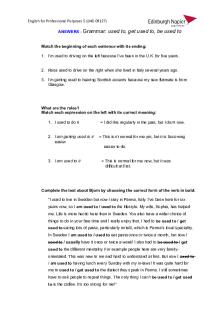Design of MUX and Demux - Demultiplexer is used to connect a single source to multiple destinations. The PDF

| Title | Design of MUX and Demux - Demultiplexer is used to connect a single source to multiple destinations. The |
|---|---|
| Author | RIJUL KHARBANDA |
| Course | Digital Logic and Design |
| Institution | Vellore Institute of Technology |
| Pages | 12 |
| File Size | 963.9 KB |
| File Type | |
| Total Downloads | 57 |
| Total Views | 127 |
Summary
Demultiplexer is used to connect a single source to multiple destinations. The main application area of demultiplexer is communication system, where multiplexers are used. Most of the communication system are bidirectional i.e., they function in both ways (transmitting and receiving signals)....
Description
Design of MUX and DEMUX Experiment no. 8
Date:
Aim: To design and implement multiplexer and demultiplexer using logic gates.
SOFTWARE REQUIRED: LTspice software THEORY: MULTIPLEXER: Multiplexer doe the function of transmitting a large number of information units over a smaller number of channels or lines. A digital multiplexer is a combinational circuit that selects binary information from one of many input lines and directs it to a single output line. The selection of a particular input line is controlled by a set of selection lines. Normally there are 2n input line and n selection lines whose bit combination determine which input is selected. DEMULTIPLEXER: The function of Demultiplexer is in contrast to multiplexer function. It takes information from one line and distributes it to a given number of output lines. For this reason, the demultiplexer is also known as a data distributor. Decoder can also be used as demultiplexer. In the 1: 4 demultiplexer circuit, the data input line goes to all of the AND gates. The data select lines enable only one gate at a time and the data on the data input line will pass through the selected gate to the associated data output line.
BLOCK DIAGRAM FOR 4:1 MULTIPLEXER
FUNCTION TABLE:
CIRCUIT DIAGRAM FOR MULTIPLEXER:
TRUTH TABLE
BLOCK DIAGRAM FOR 1:4 DEMULTIPLEXER :
FUNCTION TABLE:
LOGIC DIAGRAM FOR DEMULTIPLEXER:
TRUTH TABLE:
SIMULATION PROCEDURE:
1. Open LTspice. Go to File
New Schematic.
2. On the File Menu, click on Edit
Component.
3. a. For Multiplexer: Place the voltage sources, NOT gate, AND gate, and OR gate on to schematic and make necessary connections as shown in the Figure.
b.For Demultiplexer:
4.a. Connect the voltage sources as shown Figure for multiplexer.
b. Connect the voltage sources as shown Figure for Demultiplexer.
5.For Multiplexer: Right click on the voltage sources V6 and then Enter DC Value 1 and then click OK option. Right click on the voltage sources V5 and then Enter DC Value 0 and then click OK option. Right click on the voltage sources V4 and then Enter DC Value 0 and then click OK option.
Right click on the voltage sources V3 and then Enter DC Value 0 and then click OK option. Right click on the voltage sources V2 and then Enter DC Value 1 and then click OK option. Right click on the voltage sources V1 and then Enter DC Value 1 and then click OK option
For Demultiplexer: Right click on the voltage sources V3 (I/P)and then Enter DC Value 1 and then click OK option. Right click on the voltage sources V2 (S1)and then Enter DC Value 1 and then click OK option. Right click on the voltage sources V1(S0) and then Enter DC Value 1 and then click OK option 6.
Go to Edit → SPICE analysis. For both Decoder and Encoder: Select “DC op pnt” tab and Click “OK” and Press run symbol on menu bar.
Result for Multiplexer:
Result for Demultiplexer:
6.
Similarly, Verify the Multiplexer and Demultiplexer Circuits for all other cases of truth table and present the results.
Class Schematics and Outputs: Multiplexer (4x1):
Multiplexer (8x1):
De-Multiplexer (1x4):
De-Multiplexer (1x8):
Result Thus, the multiplexer and demultiplexer were implemented and verified using logic gates in LT spice software....
Similar Free PDFs

Experiment 6 MUX and Demux
- 5 Pages

Relatório 06 - Mux e Demux
- 11 Pages

How To - Connect Quest
- 7 Pages

The South is a Place to Stay
- 8 Pages

A Program to Play Connect Four
- 3 Pages
Popular Institutions
- Tinajero National High School - Annex
- Politeknik Caltex Riau
- Yokohama City University
- SGT University
- University of Al-Qadisiyah
- Divine Word College of Vigan
- Techniek College Rotterdam
- Universidade de Santiago
- Universiti Teknologi MARA Cawangan Johor Kampus Pasir Gudang
- Poltekkes Kemenkes Yogyakarta
- Baguio City National High School
- Colegio san marcos
- preparatoria uno
- Centro de Bachillerato Tecnológico Industrial y de Servicios No. 107
- Dalian Maritime University
- Quang Trung Secondary School
- Colegio Tecnológico en Informática
- Corporación Regional de Educación Superior
- Grupo CEDVA
- Dar Al Uloom University
- Centro de Estudios Preuniversitarios de la Universidad Nacional de Ingeniería
- 上智大学
- Aakash International School, Nuna Majara
- San Felipe Neri Catholic School
- Kang Chiao International School - New Taipei City
- Misamis Occidental National High School
- Institución Educativa Escuela Normal Juan Ladrilleros
- Kolehiyo ng Pantukan
- Batanes State College
- Instituto Continental
- Sekolah Menengah Kejuruan Kesehatan Kaltara (Tarakan)
- Colegio de La Inmaculada Concepcion - Cebu










